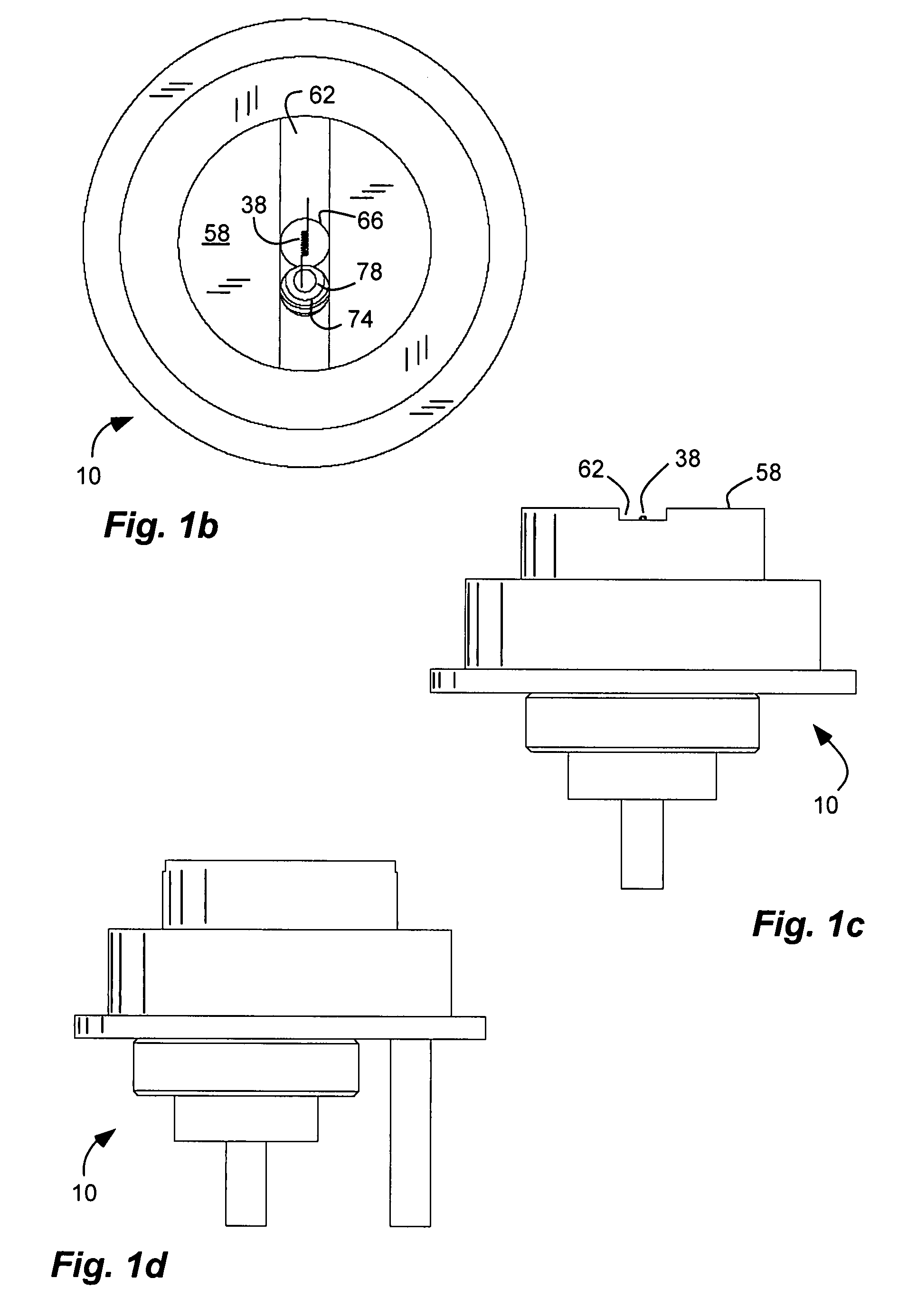Cathode header optic for x-ray tube
a cathode and x-ray tube technology, applied in the field of x-ray tubes, can solve the problems of cathode optics, relatively difficult to design and manufacture the emitter for use in an inexpensive, miniature x-ray tube, size, energy efficiency, cost and complexity of manufacturing and maintenance of tight manufacturing tolerances, etc., to achieve less affected, reduce electron beam cross-section, and increase electron efficiency
- Summary
- Abstract
- Description
- Claims
- Application Information
AI Technical Summary
Benefits of technology
Problems solved by technology
Method used
Image
Examples
Embodiment Construction
)
[0034]Referring to FIGS. 1a-2b, an exemplary embodiment of a cathode header optic 10 is shown for an x-ray tube or source 14 (FIG. 4a). The term cathode header optic is used broadly herein to describe the structure carrying the cathode element and which shapes an electric field which shapes an electron beam emitted from the cathode element. The cathode header optic can form a portion of the cathode of the x-ray tube.
[0035]Referring to FIG. 4a, the x-ray tube or source 14 can include an evacuated dielectric tube 18. An anode 22 is disposed at an end of the tube and includes a material configured to produce x-rays (represented by lines 26) in response to impact of electrons (represented by lines 30). A cathode 34 is disposed at an opposite end of the tube opposing the anode. The cathode 34 includes a cathode element 38 (FIG. 1a) configured to produce electrons accelerated towards the anode in response to an electric field between the anode and the cathode. The cathode element 38 can ...
PUM
 Login to View More
Login to View More Abstract
Description
Claims
Application Information
 Login to View More
Login to View More - R&D
- Intellectual Property
- Life Sciences
- Materials
- Tech Scout
- Unparalleled Data Quality
- Higher Quality Content
- 60% Fewer Hallucinations
Browse by: Latest US Patents, China's latest patents, Technical Efficacy Thesaurus, Application Domain, Technology Topic, Popular Technical Reports.
© 2025 PatSnap. All rights reserved.Legal|Privacy policy|Modern Slavery Act Transparency Statement|Sitemap|About US| Contact US: help@patsnap.com



